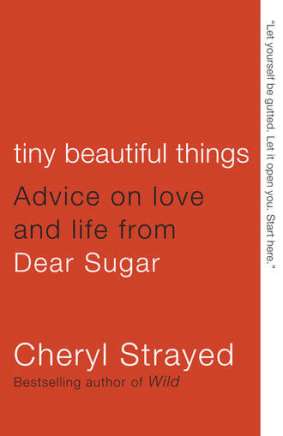I am at a time of crossroads in my life and I went out looking for a book that would speak directly to me in this time of unsettledness. I remembered reading some of Sugar’s posts on The Rumpus after I read Wild so I thought why not read Tiny Beautiful Things? I’m glad I decided to, because Sugar’s voice was what I needed, what I still need. I cried more than once reading her responses to the letters she received.
The stories that arrive to Sugar, first on The Rumpus and now in Tiny Beautiful Things come from people who are often is positions very similar to mine – they are in a state of flux, they have a relationship in a bad place, they are lonely, they are overwhelmed, they are angry, they are sad. Through her thoughtful and inspired answers Sugar pulls from the deep well of empathy in her to provide both answers, but also the questions that we need to be asking ourselves as we move through the journey that is building our lives. Cheryl Strayed, the no longer anonymous Sugar, credits this place in side of her from which the empathy pours as being her best legacy of the woman her mother raised her to be. And we learn a great deal about Cheryl’s parents, her upbringing, her marriage and her life as we progress through the book, since Sugar tends to explain why her experiences are impacting her answer to any given query in a certain way.
I’ve seen other reviewers see this as a detriment, but I don’t. There’s a certain level of honesty, of understanding, that Sugar is able to deliver in her missives that would be missing if she didn’t lay herself bare in the writing. Tiny Beautiful Things reads much more like a book your best, most wise friend wrote to you to take you through the hard times. And don’t we all need that?
I don’t know that I’d suggest this book to everyone, even though I’m rating it quite high. First, not everyone is a Cheryl Strayed fan, so if you didn’t particularly enjoy Wild then this one is likely not for you. Second, you as a reader probably need to be in a certain place in your life to fully immerse into this book. Otherwise it might feel like too much, all the sadness, and loneliness that covers these 350 pages might weigh too heavily on you. I suggest looking up some of Sugar’s columns and giving them a twirl before committing to the book. But if you too are in a place of needing a sister-friend, then this one might be for you.
This book was read and reviewed as part of the charitable Cannonball Read.







